U.S. Space Workforce
U.S. Space Industry Employment
NASA Civil Servant Workforce, 2012-2022
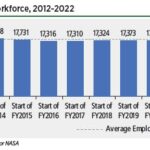
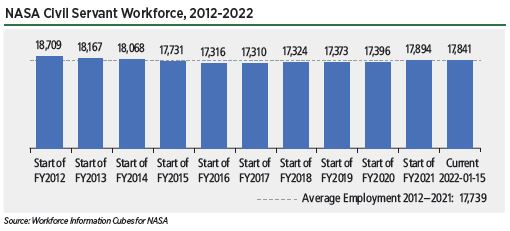
NASA’s civil service workforce has grown gradually in recent years, contributing to an increase in U.S. space employment.
2019 TSRQ1 – Workforce: U.S. Space Workforce
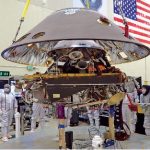
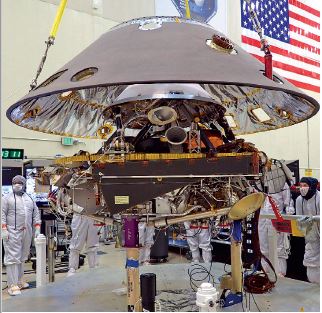
The global space industry employs hundreds of thousands of highly-skilled individuals to design, produce, and operate cutting-edge technology. This workforce, in turn, contributes to thriving local economies, with clusters of innovative companies and service support industries. Understanding trends . . .
2018 – U.S. Space Industry Employment
The U.S. Bureau of Labor Statistics (BLS) publishes information about employment in the United States in its Quarterly Census…
2017 – U.S. Space Industry Employment
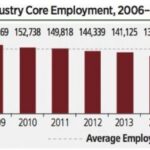
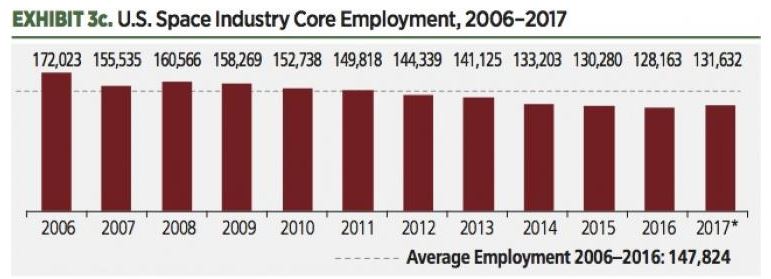
In 2016, private industry space companies in the United States employed 128,163 professionals. This is 1.6% fewer than . . .
2016 – U.S. Space Industry Employment
In 2015, the most recent year for which data is available, the U.S. civilian space sector included ## individuals. Employment is essentially unchanged from 2014, when ## individuals worked in this area. Longer-term trends, however, show…
U.S. Space Industry Outlook
In December 2015, the U.S. Bureau of Labor Statistics released the 2016-17 Occupational Outlook Handbook (OOH). The OOH provides employment projections for the decade from 2014 to 2024. Among the 329 occupational profiles are four particularly applicable to the space industry: Aerospace Engineers, Aerospace Engineering and Operations Technicians, Astronomers, and Atmospheric and Space Scientists.
2015 – U.S. Space Industry Employment – Snapshot
The U.S. Bureau of Labor Statistics (BLS) collects data on employment and salaries within U.S. establishments as reported by employers each year, covering 98% of U.S. jobs.
Workforce: Space Workforce – TSR 2015
2014 – Trends and Events Affecting U.S. Employment
While trends in employment levels varied, wages grew across almost all sectors from 2008 to 2013, even accounting for inflation. In fact, the two industry sectors with the greatest percentage decreases in workforce size were those with the greatest increases in real wages. Average salaries for Satellite Telecommunications increased by ##%.
2014 – U.S. Space Industry Outlook
Every two years, the U.S. Bureau of Labor Statistics develops employment projections based on expected developments in the labor force and economy, changes in demographics and technology, and a variety of other factors. In January 2014, BLS released the 2014–2015 Occupational Outlook Handbook, covering projections for the 2012–2022 decade.